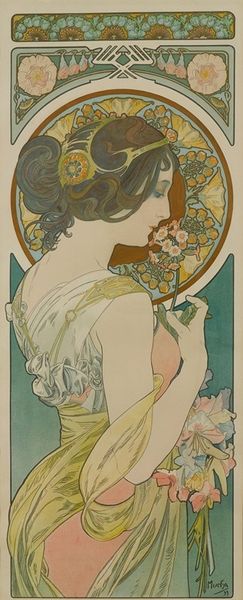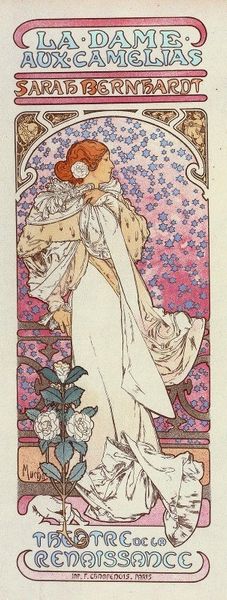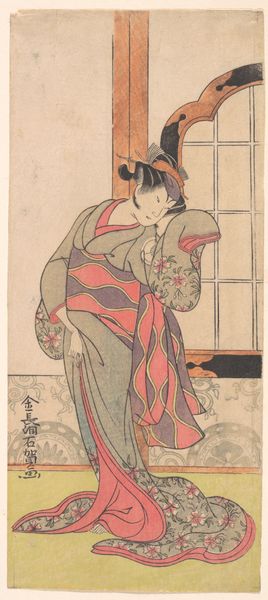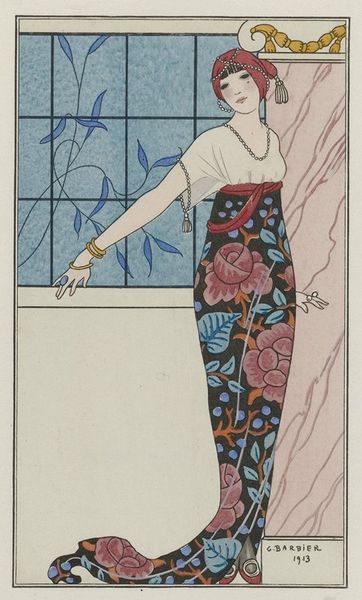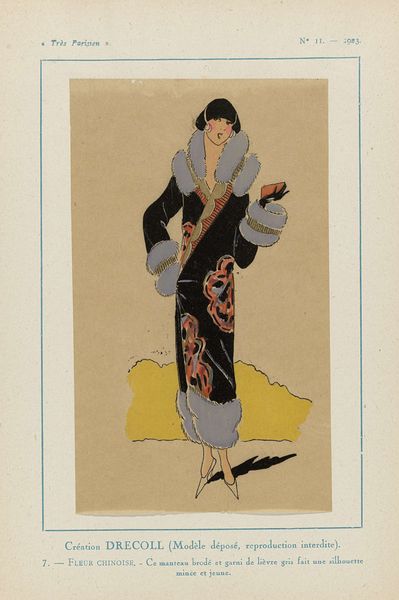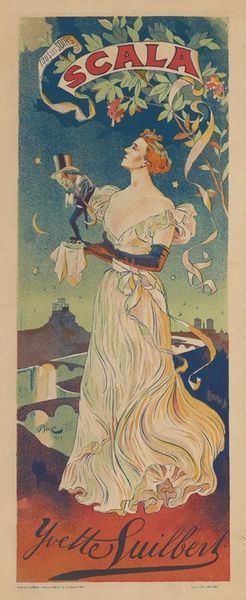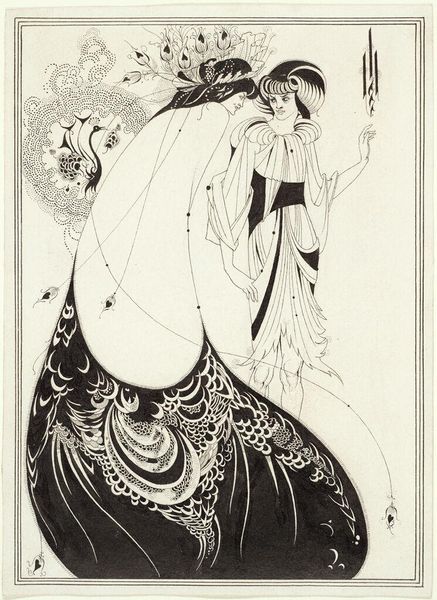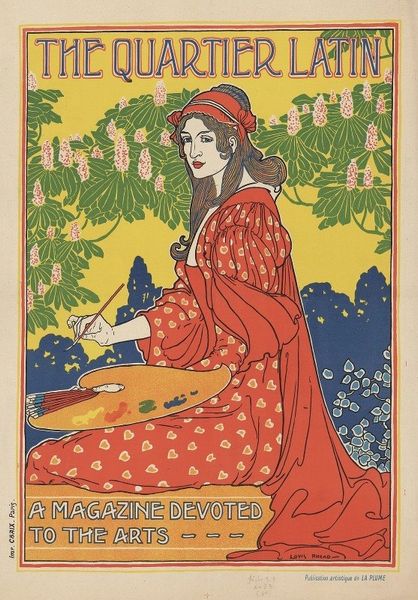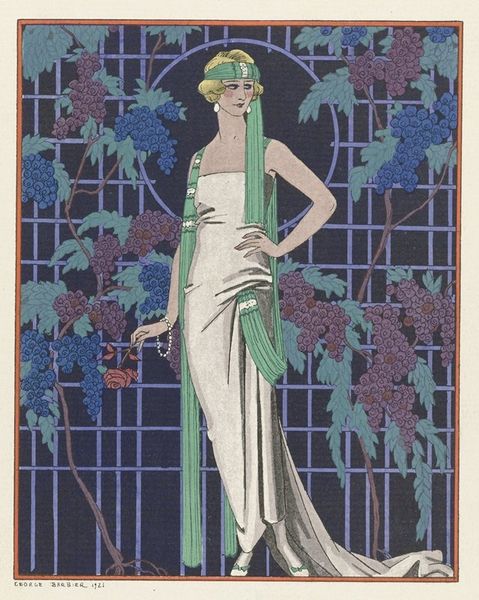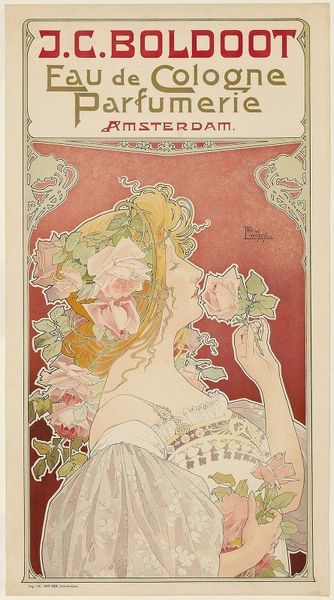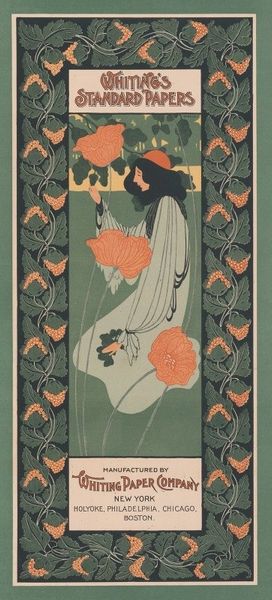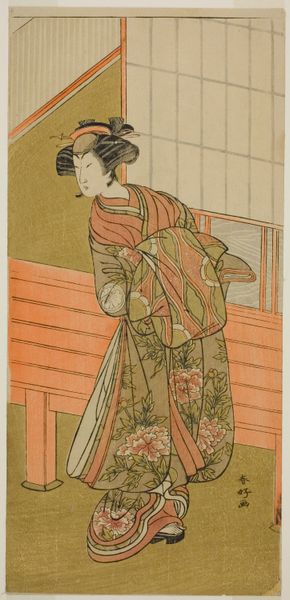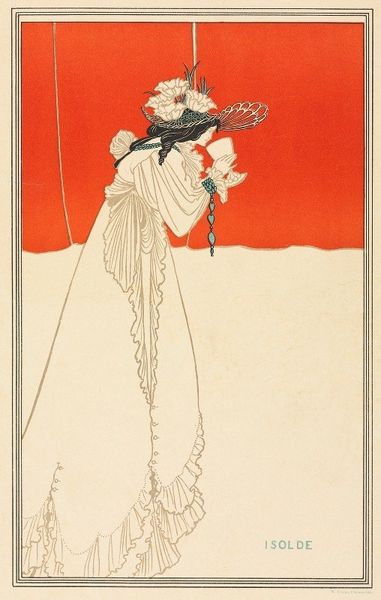
tempera, painting
#
portrait
#
art-nouveau
#
tempera
#
painting
#
landscape
#
figuration
#
symbolism
#
decorative-art
Copyright: Public Domain: Artvee
Curator: The composition just leaps out at you, doesn't it? The use of contrasting hues to define shape creates such visual richness. Editor: Absolutely, there's an immediate visual charm. And that deep burgundy against the peacock blues… it's alluring and calming. Here we see Louis Rhead's tempera painting from around 1897, "Woman with Peacocks". It's an outstanding example of the Art Nouveau movement's interest in flat pattern and flowing line. Curator: And the peacock motif itself carries such cultural baggage, doesn't it? For millennia, peacocks have signified wealth, beauty, and even immortality. Its symbolism spans cultures from Persia to Christianity, often linked with royalty and divine sight. It's a potent symbol to pair with the feminine figure. Editor: Right. The late 19th-century was captivated by such potent combinations of the natural world, feminine representation, and industrial progress. Art Nouveau served as this interesting bridge. It manifested a cultural yearning for harmony with nature but rendered with industrial precision in printing techniques, making art more accessible. Curator: Note how the woman doesn’t engage the viewer. She seems to contemplate her own existence, and maybe ours too, in a garden that exists both inside her mind and in the visual plane before us. What do you suppose these stylized renderings of the landscape mean? Is it just decoration or more? Editor: I lean toward more, because these aren't straightforward depictions of nature but heavily stylized symbols. The entire backdrop—the flora, fauna—becomes almost a psychological landscape. Curator: Yes, and this decorative flatness and stylization is so typical of that era; think Beardsley or Klimt. I see this not merely as decorative but almost a ritualistic space, in tune with certain Pre-Raphaelite symbolist paintings—a realm for inner exploration rendered in beautiful aesthetic form. Editor: It’s a space where, politically and socially, women began finding new voices. While still constrained by the period, they had burgeoning visibility. This image could speak to how new freedoms are internalized in private realms and self-representation, if not yet overtly in the public square. Curator: Seeing it that way is insightful. Editor: So, this encounter revealed deeper meaning in that initially arresting visual charm. Curator: Yes, I agree. Peeling back those symbolic layers really makes you appreciate Rhead's complex layering of symbolism with those Art Nouveau sensibilities.
Comments
No comments
Be the first to comment and join the conversation on the ultimate creative platform.
